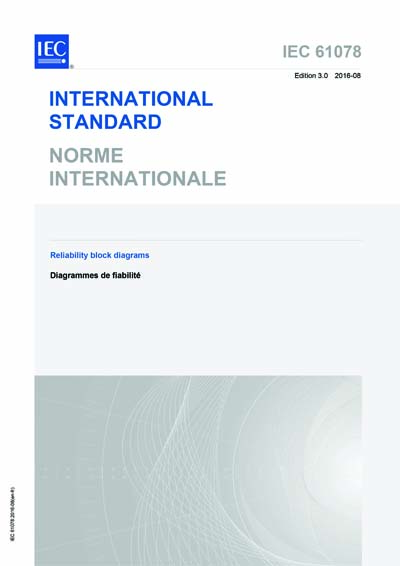Most recent
IEC 61078 Ed. 3.0 b:2016
Reliability block diagrams
IEC 61078:2016 this International Standard describes:
- the requirements to apply when reliability block diagrams (RBDs) are used in dependability analysis;
- the procedures for modelling the dependability of a system with reliability block diagrams;
- how to use RBDs for qualitative and quantitative analysis;
- the procedures for using the RBD model to calculate availability, failure frequency and reliability measures for different types of systems with constant (or time dependent) probabilities of blocks success/failure, and for non-repaired blocks or repaired blocks;
- some theoretical aspects and limitations in performing calculations for availability, failure frequency and reliability measures;
- the relationships with fault tree analysis (see IEC 61025) and Markov techniques (see IEC 61165). This third edition cancels and replaces the second edition published in 2006. This edition constitutes a technical revision. This edition includes the following significant technical changes with respect to the previous edition:
- the structure of the document has been entirely reconsidered, the title modified and the content extended and improved to provide more information about availability, reliability and failure frequency calculations;
- Clause 3 has been extended and clauses have been introduced to describe the electrical analogy, the "non-coherent" RBDs and the "dynamic" RBDs;
- Annex B about Boolean algebra methods has been extended;
- Annex C (Calculations of time dependent probabilities), Annex D (Importance factors), Annex E (RBD driven Petri net models) and Annex F (Numerical examples and curves) have been introduced. Keywords: reliability block diagram (RBD)
International Electrotechnical Commission [iec]

